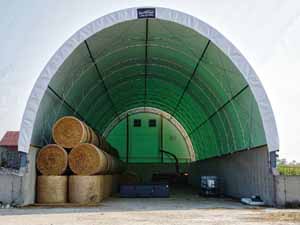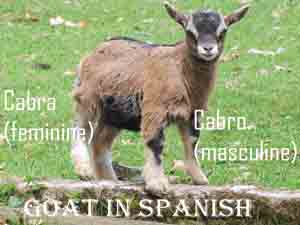Understanding your dogs body language is very important, especially if you are a new dog owner. You may not realize it, but body language is just as, if not more important, than our words when we communicate. For example, a friend may be smiling as they recall an experience, but the look in their eyes and increased tension in their muscles could suggest that the experience upset them in some way. Understanding body language can make communicating with other people easier, sure, but it’s also important to understand your dog’s body language.
Understanding Your Dogs Body Language
Dogs can’t speak to us, so they mostly communicate through body language. Understanding this could prevent you or others from upsetting the dog and being bitten. If you have been bitten by a dog then you will need a dog bite attorney to help you with your next steps. For now, though, let’s begin by examining a dog’s tail.

1. Tail Posture
We typically think of a dog’s tail wag, meaning that they are happy, but this isn’t necessarily true. Dogs do wag when they are happy but also when they are just excited or even angry. A wagging tail just means that the dog’s feeling a strong emotion. Instead, consider the speed and direction of the tail wag—if the tail is wagging more to the left, than it is not currently experiencing positive emotions, but it is if the tail is wagging in a circle or to the right, though. The faster the tail wags, the more intense the emotion is.
For example, if grandma visits, then your dog’s tail may be spinning very fast since they are excited to see her again. One more piece of tail posture to understand is the position. First, you will need to recognize what a neutral position is. Some dogs, like Beagles, naturally hold their tail up high while others, such as the German Shepherd, have it pointed down. We know that a tail between the legs demonstrates fear, but an upright tail means your dog is assertive either due to confidence or aggression. The rest of the dog’s body language can tell you which they feel.
2. Eyes
The look of your dog’s eye, the eye contact they make, how open they are and even the dilation of their pupils can tell you a lot about how they feel. If a dog’s eyes are nearly closed then they are either relaxed or showing submission to avoid aggression. Seeing the whites of a dog’s eyes usually means a dog is afraid or stressed. Dilated pupils mean an intense interest, though it can relate to fear as much as play.
When your dog is uncomfortable, it will make less eye contact since a stare means it feels threatened and may become aggressive. Looking away is meant to calm a situation by showing they mean no harm. Finally, consider how soft or hard your dog’s eyes look.
Soft eyes are a good thing as the dog is relaxed and calm, while hard eyes may mean aggression or frustration. Your dog will stare at what it feels the threat is to both intimidate and warn it of a potential fight. Try to avoid scenarios where you see the whites of your dog’s eyes or their eyes showcase negative emotions. Distract them if they appear to be staring at another dog or person with aggression.
3. Facial Expression
Your dog has facial expressions, but they are much different from ours. For example, we may lick our lips when we hear about delicious food, when our lips are dry, or when we feel anxious, and dogs will do something similar. They may lick their lips after eating food, but doing so otherwise may indicate anxiety.

Yawning has a completely different meaning for dogs as well. We yawn when we feel tired or bored, but a dog does so to diffuse a situation when they’re stressed. There may be another reason why they yawn though, and it’s exactly why you are currently fighting the urge to do so; yawns are contagious.
If a stressed dog yawns, you may do so as well, and vice versa. Another expression to watch for is your dog’s smile. They are not happy with clenched or gritted teeth, curled lips, and snarls. This is an obvious sign of aggression. If whatever the dog is snarling at refuses to back down, the dog will attack. A dog that smiles while relaxed and calm, however, is instead showing that they mean no harm and is a good sight to see.
4. Weight Distribution
Your dog’s posture and weight distribution will give you a glimpse into their feelings and thoughts as well. The most easily understood distribution is the playful stance. When a dog hunches down with their front on the ground and their rear in the air, they want to play. They are relaxed and happy in this position.
Dogs rolling onto their back could mean they are relaxed and would like a belly rub, but it can also be a sign that they mean no harm. The belly is one of the most vulnerable parts of an animal’s body, so they only show it to those they feel they can trust.
A dog that is standing with their weight pushed forward is interested in something. This could be curiosity or aggression based on the rest of their body language. Some dogs will raise their paw, and what this means will differ based on the breed. Those used for hunting will be pointing at something of interest, such as prey. Other times, it may indicate insecurity or uncertainty. Again, the rest of the dog’s body language will tell you how they feel.

5. Better Understanding Your Dog
There are many other signs to watch for, from the position of the ears to the sound of a dog’s bark. All of these signs work together to create the dog’s body language and inform those around them of how they feel and what they may do next. If you notice your dog demonstrating nervous or aggressive body language, you need to try and stop whatever is causing the distress and distract the dog. Failing to do this may lead to a bite. Make sure your dog is trained so you can distract it during these moments. Remember, the first step in preventing tragedy is to notice the warning signs, and your dog’s body language is that warning sign.






